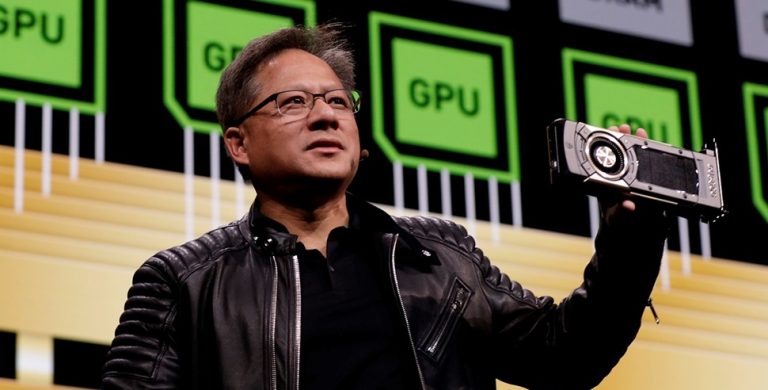
Nvidia CEO Jensen Huang has described Artificial Intelligence (AI), as a transformative force, dubbing it a “great equalizer”, for its ability to let anyone program using everyday language.
He made this statement at the London Tech Week on Monday, noting that the core tech skill was once complex, which required mastery of programming languages and system design. “We had to learn programming languages. We had to architect it. We had to design these computers that are very complicated,” he said.
CEO Huang, whose company engineers some of the world’s most advanced semiconductors and AI chips, highlighted that very few people know how to use programming languages like C++ or Python, but “everybody knows ‘human’.”
Register for Tekedia Mini-MBA edition 19 (Feb 9 – May 2, 2026): big discounts for early bird.
Tekedia AI in Business Masterclass opens registrations.
Join Tekedia Capital Syndicate and co-invest in great global startups.
Register for Tekedia AI Lab: From Technical Design to Deployment (next edition begins Jan 24 2026).
“The way you program a computer today, to ask the computer to do something for you, even write a program, generate images, write a poem — just ask it nicely,” he said. “And the thing that’s really really quite amazing is the way you program an AI is like the way you program a person.”
With conversational AI chatbots emerging, users can now interact easily and naturally with computers, the way they want. Several chatbots and AI tools enable programming through natural language, allowing users to code, debug, or generate scripts without deep knowledge of programming languages.
Below are some notable examples:
ChatGPT (OpenAI)
Users can ask ChatGPT to write code in languages like Python, JavaScript, or C++, debug errors, or explain code snippets. For example, they can prompt it to “write a Python script to sort a list” or “fix this buggy JavaScript function.” It supports a conversational approach, refining code based on follow-up requests.
Popular among developers and non-coders alike, with OpenAI reporting 400 million weekly active users as of February 2025. It’s used by businesses (3 million paying users) for tasks like automating workflows or generating scripts.
Grok 3 (xAI)
Grok, built by xAI, supports natural language programming, enabling users to generate code, execute simple scripts, or troubleshoot errors by describing tasks in plain English. For instance, users could say, “Create a Python function to calculate Fibonacci numbers,” and it will provide a working solution. It can also assist with visualizing basic charts or executing code in a canvas panel.
Gemini (Google)
Gemini allows users to generate code, explain programming concepts, or automate tasks through conversational prompts. It supports multiple languages and can handle complex queries like “write a React component for a to-do list.”
Integrated into Google’s ecosystem, it’s used for both personal and professional coding tasks, competing closely with ChatGPT.
Copilot (Microsoft)
Powered by OpenAI’s tech, Copilot is tailored for developers, integrating directly into IDEs like Visual Studio Code. It suggests code completions, generates functions, and supports natural language queries like “create a REST API in Node.js.” It’s particularly strong for real-time coding assistance.
Claude (Anthropic)
Offers conversational coding support, focusing on safe and interpretable outputs. It can generate and debug code but is less widely discussed for programming compared to ChatGPT or Copilot.
These tools leverage large language models (LLMs) trained on vast datasets, including code repositories, enabling them to understand and generate code from human-like prompts.
As Nvidia’s Jensen Huang noted, this “human” programming language democratizes coding, letting anyone from beginners to experts create software by describing tasks naturally. He further touted AI’s ability to help workers do their jobs more efficiently, encouraging them to embrace the technology as they look to make themselves valuable in the workplace.



